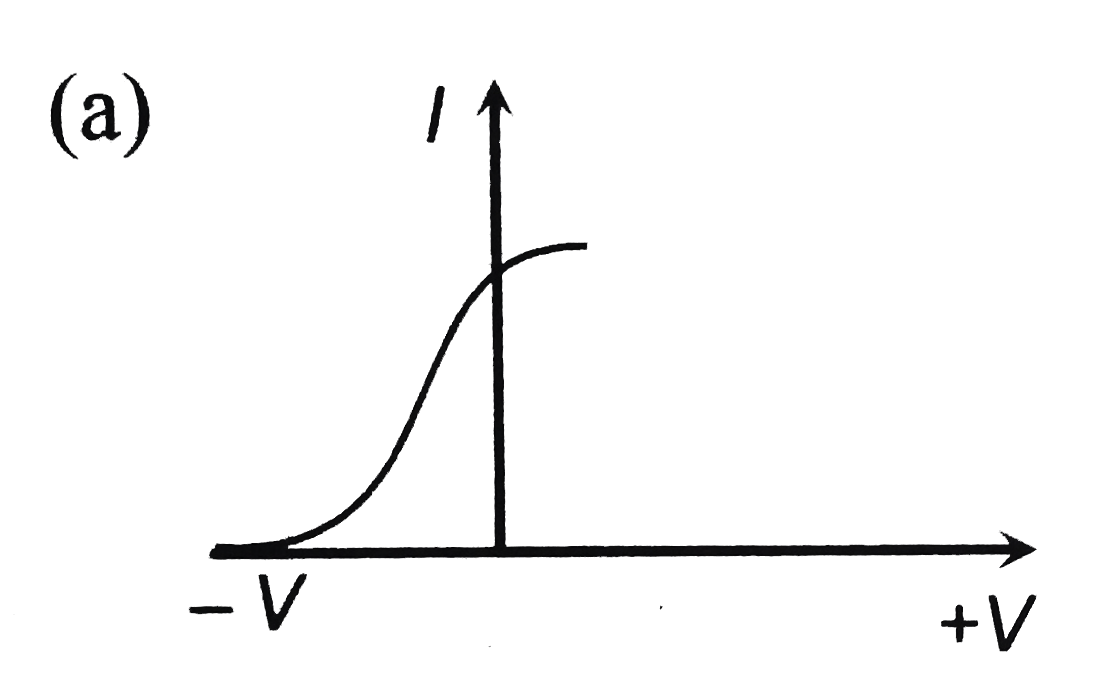Different voltages are applied across a P−N junction and the currents are measured for each value. Which of the following graphs is obtained between voltage and current?
A

B

C

D

Video Solution
Text Solution
The correct Answer is:C
PN junction has low resistance in one direction potential difference +V, so a large current flows (forwards biasing). It has a high resistance in the opposite potential difference direction −V, so a very small current flows (Revese biasing).
|
Topper's Solved these Questions
- SEMICONDUCTOR ELECTRONICSBOOK - A2ZCHAPTER - SEMICONDUCTOR ELECTRONICSEXERCISE - Diode In Circuits
40 Videos
- SEMICONDUCTOR ELECTRONICSBOOK - A2ZCHAPTER - SEMICONDUCTOR ELECTRONICSEXERCISE - Junction Transistor
47 Videos
- SEMICONDUCTOR ELECTRONICSBOOK - A2ZCHAPTER - SEMICONDUCTOR ELECTRONICSEXERCISE - Classification Of Metals
64 Videos
- NUCLEAR PHYSICSBOOK - A2ZCHAPTER - NUCLEAR PHYSICSEXERCISE - Section D - Chapter End Test
29 Videos
- SOURCE AND EFFECT OF MAGNETIC FIELDBOOK - A2ZCHAPTER - SOURCE AND EFFECT OF MAGNETIC FIELDEXERCISE - Section D - Chapter End Test
30 Videos
Similar Questions
Knowledge Check
No biase is applied to a P−N junction, then the current
AIs zero because the number of charge carriers flowing on both sides is sameBIs zero because the charge carriers do not moveCIs non zeroDNone of theseNo bias is applied to a P-N junction, then the current-
AIs zero because the number of charge carriers flowing on both sides is sameBis zero because the charge carriers do not moveCIs non-zeroDNone of theseIf no external voltage is applied across P−N junction, there would be
ANo elctric field across the junctionBAn electric field pointing from N-type to P-type side across the junctionCAn electric field pointing P -type to N -type side across the juncitonDA temperary electric field during formation of P−N junction that would subsequently disappear
Find the phase difference between voltage and current.
View SolutionIf no external voltage is applied across P-N junction, there would be -
View SolutionWhich of the following represents the value of voltage and current at that instant?
View SolutionWhich of the following draws no current from the voltage source being measured?
View SolutionA constant voltage at different frequencies is applied across a capacitance C as shown in the figure. Which of the following graphs correctly depicts the variation of current with frequency

View Solution
